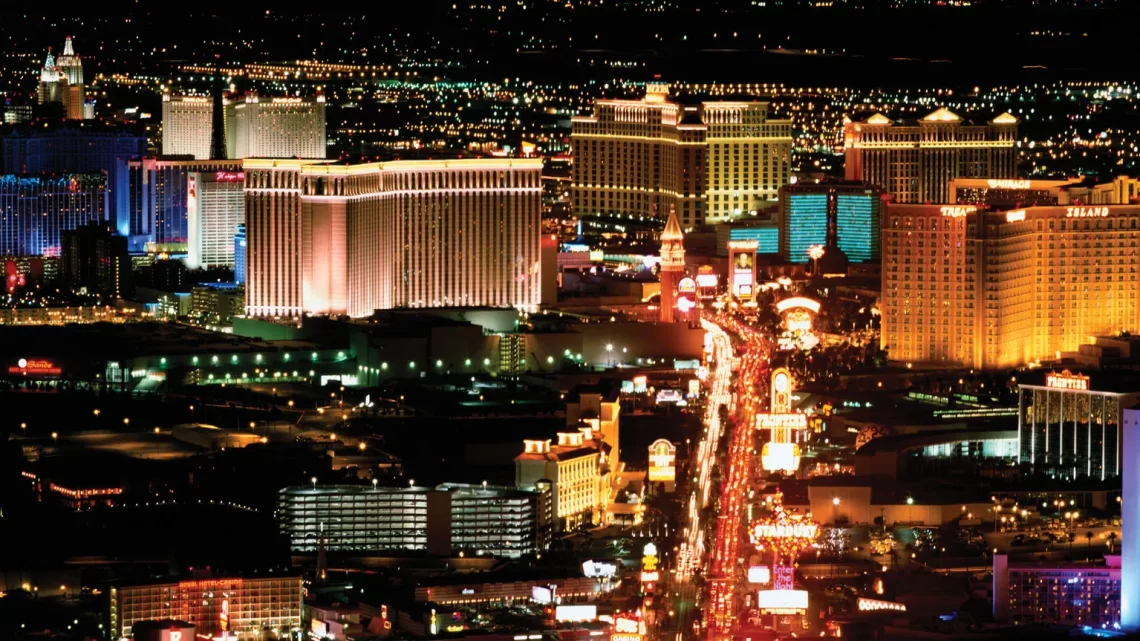The History of Las Vegas and Its Transformation Into a Casino Hub
January 2, 2024Las Vegas transformed quickly from a small desert town into an international casino center over just several short decades, thanks to a visionary like Benjamin “Bugsy” Siegel.
Although loose gambling laws existed, the city of Las Vegas struggled to prosper until 1931 when Nevada legalized gambling and construction of Hoover Dam brought electricity, water, hordes of workers, and numerous casinos into operation.
1905
Las Vegas was officially founded by Nevada in 1905 as a railroad town. However, by 1950 it had grown into a gambling mecca and attracted heavy support from organized crime figures, including notable members of the Rat Pack who frequented Las Vegas showrooms.
Economic activity was greatly stimulated in Boulder City thanks to federal projects like Hoover Dam and Lake Mead, which brought electricity, water, and hordes of young male workers from outside Arizona into town.
In the 1950s, several large hotels including Aladdin’s Road to Morocco-themed Aladdin Hotel and Caesars Palace with its Roman Empire celebration opened their doors for business. By the end of this decade, Fremont Street had become known as Glitter Gulch with casino culture taking off and Fremont Street had been transformed into Glitter Gulch; casino culture flourished while resorts realized they must provide more than gaming to draw customers in. Gaming became just one form of entertainment available to visitors; to remain viable they must provide more comprehensive forms of entertainment besides gaming as the core draw for visitors if gaming was an attraction if gaming were solely offered – an understanding that gaming must remain a key draw but more diverse forms to appeal.
1931
After 10 years of rapid expansion in which 10 major casinos opened, construction stopped abruptly due to an anti-Mafia crackdown that crippled expansion efforts. Of the few that did open, such as Road to Morocco-themed Aladdin and Roman Empire bacchanalia of Caesars Palace, each sought to outdo each other with luxurious amenities and themed splendor.
Las Vegas was long known for being synonymous with sin, gambling, entertainment, mobs and empty dreams – until Hoover Dam began construction bringing with it electricity, water and hordes of young male workers whose wages fuelled casino culture in new ways.
1950
As mob influence waned, casinos began reinventing themselves to appeal to more luxurious customers by featuring Elvis and Rat Pack concerts, while hotels added spas and showrooms for visitors looking for luxury experiences.
Hoover Dam construction also brought an influx of workers, which in turn stimulated Las Vegas’ local economy and increased its reputation as the entertainment capital.
Mega-resorts marked a critical turning point for Vegas. Their arrival ushered in a new era of casino tourism that continues to propel its development; at this time too, celebrities and business tycoons began flocking to its streets – ultimately making Vegas an international tourist destination.
1973
Las Vegas was struggling in the 1970s to shed its image as an unattractive tourist trap, as investors lost interest and casinos became outdated and run-down while showrooms hosted ageing performers who had seen their careers fade away.
But the mob remained influential; Benjamin “Bugsy” Siegel used mob funds to construct The Flamingo hotel on The Strip in 1946 using mob funds. Casinos then began featuring shows featuring celebrities like Rat Pack members, Elvis and Liberace as well as nuclear test observation parties to draw people in.
Merv Griffin’s daytime talk show launched in 1971 and introduced Las Vegas as the place to see and be seen, sparking its transformation into what we know today as Entertainment Capital of the World.
1980
After the completion of Hoover Dam, construction industry workers flocked to its vicinity. Over time, Las Vegas became an oasis for construction workers with pools, spas and nightly live entertainment by the Rat Pack and Liberace among many other popular stars.
Mob figures were quick to seize upon opportunities offered by casinos to open them and promote celebrity acts and showgirls as drawcards for potential patrons. Some even hosted nuclear test observation parties to keep patrons coming back!
Mob rule could only last so long in Las Vegas; when the FBI arrested Bugsy Siegel in 1947, its growth ceased altogether. A few years later however, Howard Hughes began purchasing Las Vegas casinos and helping turn it around – ultimately giving rise to what we now recognize as Vegas.






